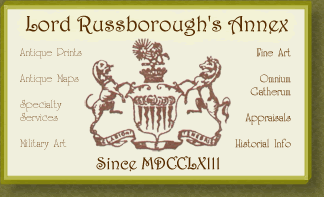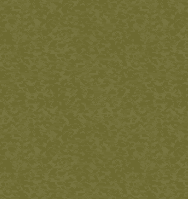 |
 |
 |
 |
 |
 |
 |
SECTION 3
NELSON'S FARTHEST NORTH!
In the latter quarter of the 18th century, following the Seven Years War and American War of Independence, there was a surfeit of Naval officers’ keen for promotion. A way to distinguish oneself was by exploration or by heroic deed.
In 1773, Daines Barrington and the Royal Society persuaded the Navy to send a voyaging expedition under Lt. Constantine John Phipps (second Baron Mulgrave), to make an attempt on the North Pole. The expedition was eventually stopped by ice off northwestern Spitsbergan. Having discovered Walden Island and achieved the record for farthest north (latitude 80°48'N.), a record which was not broken until William Scoresby's expedition in 1806. Much useful scientific and survival information was gathered, not least by a young midshipman of 15, Horatio Nelson, who, on this voyage made his first claim to fame in a dramatic close encounter with a polar bear, which he allegedly clubbed with the butt of a musket. Phipps was also the first European to describe the Polar Bear and the Ivory Gull. The meticulous Phipps was promoted Captain and went on to a distinguished Naval and political career. Nelson’s career and death at Trafalgar immortalized him as a British iconic hero.
Various forms of protection against sea worms (teredo navalis) were attempted since the 17th century, including deal, tar mixed with hose hair and lead. However, it was not until the advent of copper sheathing, introduced into the Royal Navy in 1761 and universally adopted by the 1780's, that the problem was solved. It was also discovered that copper bottoms greatly improved the sailing qualities of wooden ships. Phipps's voyage was the first Naval test of the new technology in Arctic conditions.
From the 1770's on, there has been increasing scientific interest taken in the Arctic and Polar regions, with expeditions and voyages directed toward the acquisition of scientific knowledge still being commissioned today.
|
 |
 |
 |
 |
 |
 |
 |
 |
 |
 |
 |
What was the relevance of Phipps voyage:
- The dawn of Scientific exploration and knowledge of Arctic waters and ice conditions.
- The first Arctic testing using copper sheathing for ships bottoms.
- The first European description of the polar bear and Ivory Gull.
- Discovery of Walden Island, Svalbard.
- Opportunity for advancement of British Naval officers.
|
 |
 |
 |
 |
 |
 |
 |
 |
 |
 |
 |
PLEASE NOTE THAT THESE ITEMS MAY ONLY BE PURCHASED AS A COMPLETE SECTION
Two Items >ESL PRICE CODE C Contact us

"The people behaved very well in hauling the boat; they seemed reconciled to the idea of quitting the ships, and to have the fullest confidence in the officers." Phipps ‘Journal.’ Aug.7th. 1773.
VIEW of the RACE HORSE & CARCASS (under the commend of Ld. Mulgrave & Captn. Lutwyche [sic]) inclosed [sic] in the ice, in Lat 80° 37’N.when prosecuting their celebrated expedition to the North Pole.
John Eastgate London 1786
Original Copper engraving on laid paper. 8 ¾ x 14 ¼ " (22 x 35.3 cm.)
Ref. LRApArc65/RN/o.dosg> [DSL]
Depicted in this view (the reverse close-up of the John Cleveley jr. 1773 view) published by Alex. Hogg in Anderson, G.W. New Authentic and Complete Collection of Voyages Round the World, London 1784-6, are Phipps's two bomb ketches, H.M.S. Racehorse and H.M.S. Carcass (Capt. Lutwyche / Lutwidge), the latter was refitted in April 1773 (at a cost of £2,895.8s.8d). Phipps described them thus in his journal “Bomb ketches are in the first instance stoutly built and not being over large, are best adapted for navigating seas that are known to abound with shoals and covered rocks: these vessels besides their natural strength, were sheathed with planks of seasoned oak three inches thick, to fortify them against the shocks and pressure of the ice that in their progress they must infallibly encounter.”
In search of the North Pole and a North-West passage to India, the task of Racehorse and Carcass was to break through the ice to see if there was open sea beyond Spitsbergen that might provide a route to the Bering Strait and the Pacific. In this view the ships are shown trapped in the ice on August 7, 1773 in Lat 80°37'N. Thirty-three members of the crew are seen hauling their two sloops over the hummocky pack-ice while ship’s launch boats lie nearby.
|
 |
 |
 |
 |
 |
 |
 |
 |
 |
 |
 |

[Arctic Expedition in Search of Sir John Franklin]. [NELSON ATTACKING A POLAR BEAR]
George Baxter, [London ca. 1850].
Baxter type printed in colours on wove paper. Plate size: 6 7/8 X 8 7/8" (17.5 x 22.6 cm.)
Ref. LRApArc112/EN/o.dosg> [RNN]
This dramatic incident is depicted amid a towering landscape of melting glacial ice. Two courageous, if fool hardy, midshipmen are attacking two ferocious, snarling polar bears. One mutton-chop whiskered youth raises an axe to strike the standing bear, the other about to stab the mammal with a spear; both men also carry sheathed cutlasses. Emerging from a small boat at the edge of an ice pan, three sailors rush to their assistance. In the background may be seen the two expedition ships lying at anchor, with crew filled ships-boats in attendance.
There are two theories regarding the subject of this image. One, being the print shows a fictitious incident during the James Clark Ross expedition in May 1848/9; the ships HMS. Enterprise and Investigator are seen in the background. We can find no reference to crew attacking a polar bear during the voyage of Ross & Bird in search of Sir John Franklin.
The second theory is that the image was printed to coincide with the 75th anniversary of Nelson's incident, whilst a 15-year-old midshipman on the Phipps voyage. Commander Lutwidge (HMS. Carcass), in 1800 began to circulate a story that while the ship had been trapped in the ice, Nelson and a companion had seen and pursued a polar bear, "between three and four in the morning, the mist somewhat dispersed the hunters were discovered at a considerable distance attacking a large bear, the signal was instantly made for their return... he [Nelson] was at this time divided by a chasm of ice from his shaggy antagonist, which probably saved his life. Captain Lutwidge therefore ordered a blank charge to be fired from one of the guns. The startled bear loped away."
A good story is always worth repeating and Skeffington Lutwidge was still dining out on it in 1809, his story continued upon the questioning of Nelson as to why such rashness and conduct unworthy of the situation he occupied, the latter replied that "Sir, I wished to kill the bear, that I might carry its skin to my father."
As the heroic deeds of Nelson were always a good money spinner, especially coinciding with a 75th anniversary, we suspect that Baxter combined two hot news topics to create an image with an eye for a profit.
BAXTER, George (1804-1867) "Arctic Expedition in Search of Sir John Franklin" CL No 342 dated 1850 Baxter issued his image with a domed top and a delicate "aurora" effect behind the ships, which is not apparent in our image indicating that this may in fact be the scarce Le Blond impression. Issued with out lettering. A very good print.
To purchase the original antique Prints of section 3 Contact Us
© Darrell G. Leeson MMXVI
|
 |
 |
 |
 |
|
 |










